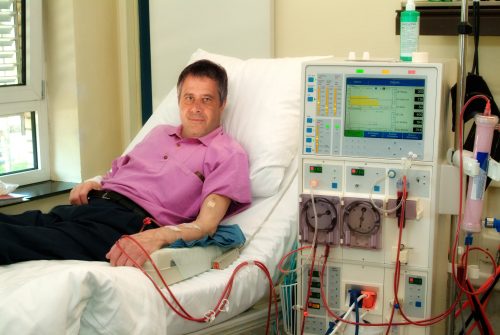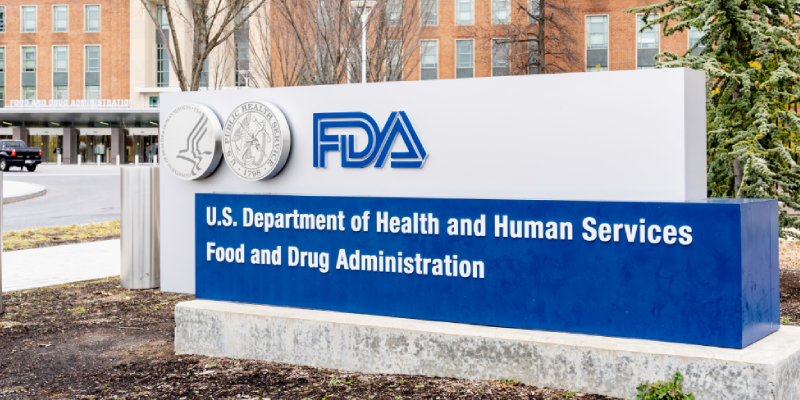
The past 20 years have seen changes in the estimated glomerular filtration rate (eGFR) where long-term dialysis is initiated in the United States and the world. According to the US Renal Data System registry, the proportion of new patients with end-stage kidney disease (ESKD) with an eGFR of 10 to 15 mL/min/1.73 m2 at the initiation of dialysis increased from 10% in 1996 to a peak of 28% in 2010.
There are few data available on associations between changes over time in the likelihood of initiation of dialysis at any given eGFR level in at-risk patients and the population burden of ESKD. Chi-yuan Hsu, MD, MSc, and colleagues conducted a retrospective cohort study to examine temporal trends in initiation of long-term dialysis by eGFR level. The researchers also sought to quantify the ways the patterns are associated with the number of patients with ESKD. Results of the study were reported in JAMA Internal Medicine [2020;180(12):1647-1654].
The study utilized deidentified data from Kaiser Permanente Northern California. Cohort of all adult members (≥18 years of age) with at least one valid outpatient serum creatinine measurement from 2001 through 2018 were grouped into 3-year intervals (2001-2003, 2004-2006, 2007-2009, 20120-2012, 2013-2015, and 2016-2018). Adults with ≥12 months of continuous membership in the health plan were included in 3-year cohorts on the first eligible January 1 within each 3-year interval. Patients with a prior kidney transplant or those who were already undergoing long-term dialysis were excluded.
The primary outcome of interest was 1-year risk of initiating long-term dialysis stratified by eGFR levels. After adjusting for age, sex, race, and diabetes status, multivariable logistic regression was performed to assess temporal trends in each 3-year cohort. The relative difference between the standardized risks in the initial cohort (2001-2003) and the final cohort was used to estimate the potential change in dialysis initiation in the final cohort (2016-2018).
During the study period, the size of the eligible population increased consistent with growth in overall health plan enrollment and more frequent outpatient serum creatinine testing per patient. In the 2001-2003 cohort, mean age in the eligible population was 55.4 years, 55% were women, and the prevalence of diabetes was 14.9%. Those characteristics and the distribution of index eGFR were stable across the study period. The prevalence of documented hypertension and dyslipidemia increased over the study period, and there was a higher prevalence of Asian/Pacific Islander and Hispanic patients in later years.
The temporal trend in mean eGFR at initiation of dialysis mirrored that in the general US population, with progressively higher mean eGFR through the first decade of the 21st century, followed by a plateau. Mean eGFR at initiation of long-term dialysis in 2001 to 2003 was 12.4 mL/min/1.73 m2, rose to 16.3 mL/min/1.73 m2 in 2010 to 2012, and did not increase through 2016 to 2018. The trends were similar for elective starts and for those initiating hemodialysis or peritoneal dialysis.
The number of eligible patients who initiated dialysis was 847 (0.086% of 983,122 at risk) in 2001 to 2003, 917 (0.074% of 1,241,537) in 2004 to 2006, 1011 (0.072% of 1,411,690) in 2007 to 2009, 1013 (0.068% of 1,482,883) in 2010 to 2012, 1092 (0.068% of 1,607,737) in 2013 to 2015, and 1224 (0.066% of 1,844,317) in 2016 to 2018. Since approximately 2008, the healthcare system has encouraged use of peritoneal dialysis as the preferred initial modality. The proportion of new cases of ESKD initiating peritoneal dialysis grew from 13.7% in 2001 to 2003 to 20.8% in 2016 to 2018.
Over time, the likelihood of long-term dialysis initiation within 1 year increased from 0.086% (95% confidence interval [CI], 0.080%-0.092%) in 2001 to 2003 to 0.103% (95% CI, 0.099%-0.107%) in 2016 to 2018 (P<.001 for trend). In analysis of the annual risk of initiating dialysis by index eGFR between 2001 and 2018, the most prominent secular trends were in those with an index eGFR of 20 to 24 mL/min/1.73 m2 (from 3.2% to 5.1%; P=.001), those with an index eGFR of 18 to 19 mL/min/1.73 m2 (from 8.3% to 11.0%; P=.03), those with an index eGFR of 16 to 17 mL/min/1.73 m2 (from 12.4% to 17.9%; P=.005), and those with an index eGFR of 10 to 13 mL/min/1.73 m2 (from 34.2% to 40.3%; P=.03). Following adjustment for age, sex, race, and diabetes, statistically significant temporal increases in 1-year odds of dialysis initiation remained among eGFR categories of 20 to 24, 16 to 17, and 10 to 13 mL/min/1.73 m2.
Among those with an index eGFR of 20 to 24 mL/min/1.73 m2, the 1-year odds of dialysis initiation increased for every 3-year interval by 5.2% (adjusted odds ratio [aOR], 1.052; 95% CI, 1.004-1.102); among patients with index eGFR of 16 to 17 mL/min/1.73 m2, the 1-year odds of dialysis initiation increased by 6.6% (aOR, 1.066; 95% CI, 1.007-1.130); and among those with index eGFR of 10 to 13 mL/min/1.73m2, the 1-year odds of dialysis initiation increased by 5.3% (aOR, 1.053; 95% CI, 1.008-1.100).
Among patients with very low index eGFR (≤9 mL/min/1.73 m2), the unadjusted and adjusted odds of initiation of dialysis were stable or decreased over time. Patterns were similar among a subset of patients with elective dialysis starts.
Limitations to the findings cited by the authors included limiting data to an integrated healthcare delivery system in California; lack of data on the specific system-, physician- and patient-level reasons that may have contributed to the observed trends; and no analysis of how changing the timing and threshold for dialysis initiation may have affected clinical outcomes.
“In conclusion, choices regarding the timing of dialysis initiation should be made on a patient-by-patient basis to maximize the net benefit for individual patients with kidney disease, including taking into account the results of large, randomized clinical trials, such as the IDEAL trial. Our results underscore the importance the timing of initiating long-term dialysis has on the size of the population of patients with ESKD,” the researchers said.
Takeaway Points
- Researchers conducted a retrospective cohort study to examine temporal trends in initiation of long-term dialysis by level of estimated glomerular filtration (eGFR) level and quantify the association of the patterns with the number of patients with end-stage kidney disease.
- Deidentified patient data from 2001 to 2018 were stratified into successive 3-year intervals. In the initial 3-year cohort, mean age was 55.4 years, 55.0% were women, and diabetes prevalence was 14.9%, characteristics that remained stable across the study period.
- The likelihood of receiving dialysis at eGFR levels of 10 to 24 mL/min/1.73 m2 generally increased over time.







 © 2025 Mashup Media, LLC, a Formedics Property. All Rights Reserved.
© 2025 Mashup Media, LLC, a Formedics Property. All Rights Reserved.